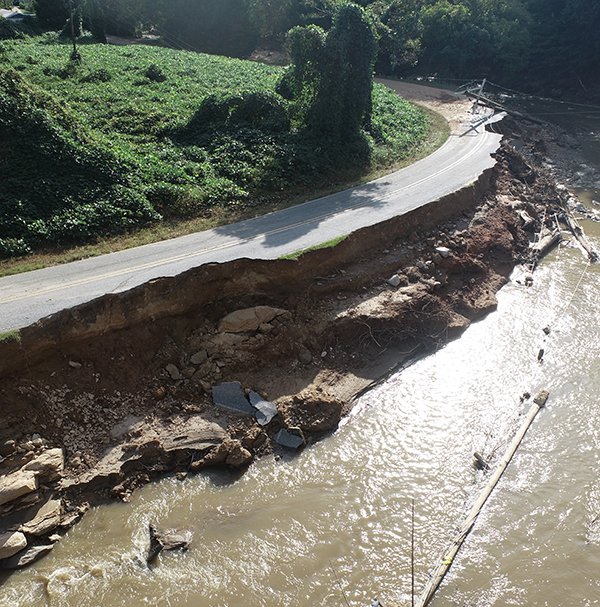The N.C. Department of Transportation’s Division of Aviation is using aircraft to capture imagery, assess infrastructure, and assist with disaster relief efforts in the wake of Hurricane Helene.

A range of aviation resources have been deployed in Western North Carolina, including N.C. National Guard aircraft, NCDOT’s aerial imagery planes and drones, and private organizations making air drops of food, water and other emergency supplies.
NCDOT’s drone teams and Photogrammetry unit, the Civil Air Patrol and the National Oceanic and Atmospheric Administration have flown over 240 missions to capture images that are being used to inform the massive disaster response effort. This real-time data enables NCDOT teams to gather information about difficult to reach areas and prioritize safe response and recovery operations.
“NCDOT’s aerial imagery has played a vital role in the aftermath of Hurricane Helene, providing critical data that may not be safely visible from the ground,” said Becca Gallas, Director of NCDOT Division of Aviation. “The imagery is essential for designing effective solutions to repair and restore damaged infrastructure like roads and bridges, ensuring the safety and efficiency of our transportation networks during recovery efforts.”
NCDOT employs three primary types of imagery: rapid situational awareness images, site-specific drone images, and photogrammetry images.
Rapid Situational Awareness
Within 24-hours of Helene impacting North Carolina, NCDOT, in partnership with the Civil Air Patrol, conducted several fixed-wing airplane missions across Western North Carolina to get rapid images of potentially impacted dams and major highway corridors. This helped identify necessary road closures and the deployment of crews and resources.
Site-Specific Drone Missions
NCDOT drone teams were deployed throughout the region to assess specific sites along road and rail routes. These high-resolution images and videos provide critical insights into the extent of the damage without risking staff safety. The images are then used to assess bridge and road conditions that can be communicated to the public.
Photogrammetry
Photogrammetry missions involve capturing detailed aerial images, using fixed-wing airplanes equipped with specialized cameras. Photogrammetry staff use the two-dimensional images and flight data to create three-dimensional maps. These models are used by planners and engineers to design solutions for repairing and restoring damaged infrastructure, such as roads and bridges. NCDOT has conducted a number of photogrammetry missions already and is prioritizing additional corridors for further analysis.
NCDOT will continue to prioritize and fly aerial missions, customizing imaging efforts based on the size, geography and specific data needs of damaged locations. These images will guide NCDOT and its partners in ensuring safe and efficient responses throughout the next phases of Hurricane Helene’s recovery.


